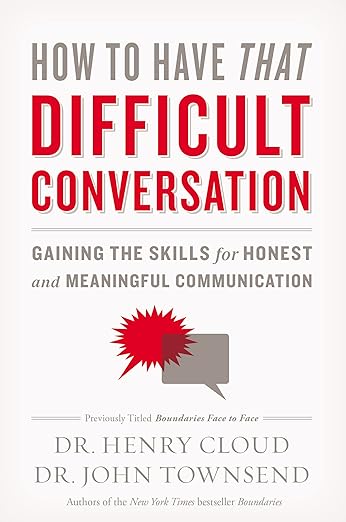10 Helpful Tips for Tough Conversations
Having tough conversations is almost always challenging and difficult to avoid during times of change, such as separation and divorce. However, tough conversations is essential for building trust, resolving conflict, and maintaining healthy relationships.
1. Prepare Mentally and Emotionally
Know your goal: What do you hope to achieve? Is it to resolve a conflict, clarify a misunderstanding, or express how you feel? Keeping this in mind will help guide the conversation in a productive direction.
Manage your emotions: If you’re feeling overly angry or upset, it’s better to pause, breathe, and collect yourself before initiating the conversation. Emotional reactions can cloud judgment and make things worse.
Anticipate the other person’s feelings: Think about how the other person might react. This can help you approach the conversation with empathy.
Practice key points and statements: Make a habit of practicing key points or statements beforehand with a therapist, a good friend, or by yourself in front of the
2. Choose the Right Time and Place
Private and neutral setting: Choose a location where both parties feel comfortable and where you can talk without distractions.
Timing matters: Avoid initiating a tough conversation when either of you is stressed, tired, or distracted. It’s important to pick a time when both people can focus and are emotionally available for a serious discussion.
3. Use “I” Statements, Not “You” Statements
Avoid blame: Focus on expressing your own feelings and experiences rather than accusing or blaming the other person. For example: Instead of saying, “You never listen to me,” try saying, “I feel unheard when I don’t get a chance to explain my side.”
Stay specific: Generalizations like “You always…” or “You never…” tend to make the other person defensive and can derail the conversation.
4. Listen Actively
Give them space to talk: Let the other person express their perspective without interrupting. Show that you’re genuinely listening through eye contact, nodding, and validating their feelings.
Clarify and reflect: Ask questions to ensure you understand their point of view. For example, “What I’m hearing is that you feel upset when I… Is that right?”
Don’t assume: Resist the urge to assume their motives or feelings. Instead, ask open-ended questions and listen to their answers without judgment.
5. Stay Calm and Avoid Escalation
Control your tone: A calm, respectful tone helps prevent the conversation from escalating. If emotions are running high, it might help to take a brief pause and refocus.
Avoid name-calling or insults: These are toxic behaviors that shut down productive communication. Stick to discussing the issue at hand, not attacking the person.
Use calming techniques: Deep breaths, pausing to collect your thoughts, or even taking a break during the conversation can help you stay composed.
6. Acknowledge and Validate Emotions
Empathize: Show that you understand how the other person feels, even if you don’t agree with them. Phrases like, “I can see that this is really frustrating for you,” or “I understand that you’re upset,” go a long way in diffusing tension.
Don’t dismiss their feelings: Even if you disagree, their emotions are valid. Acknowledging how the other person feels opens the door to deeper understanding.
7. Focus on Solutions, Not Just Problems
Collaborate on solutions: Rather than just highlighting what went wrong, try to work together to come up with a constructive resolution. Ask questions like, “How can we make this better?” or “What do you think would help?”
Be open to compromise: Tough conversations often require finding middle ground. Be flexible and willing to negotiate to reach a mutual agreement.
8. Take Responsibility When Necessary
Own your part in the situation: If you made a mistake or contributed to the issue, acknowledge it. Taking responsibility shows maturity and helps foster a collaborative atmosphere for resolution.
Apologize sincerely: If appropriate, a genuine apology can be a powerful way to heal wounds and demonstrate your commitment to making things right.
9. Know When to End the Conversation
Don’t force a resolution: Sometimes, a difficult conversation will need time to process. If it’s clear that neither side is getting through to the other, it might be best to take a break and revisit the issue later when both parties are calmer and better prepared.
Agree to disagree: In some situations, it may not be possible to find common ground, and that’s okay. Respectfully acknowledging your differences can be a healthy way to end the conversation.
10. Follow Up
Check in after the conversation: Especially for ongoing issues, it can be helpful to touch base after some time has passed. This shows that you care about the outcome and are committed to maintaining open communication.

Additional Reading:
How to Have That Difficult Conversation: Gaining the Skills for Honest and Meaningful Communication Paperback
by Henry Cloud, John Townsend
Full of practical tips and how-tos, this book will help you make your relationships better, deepen your intimacy with people you care for, and cultivate more love, understanding, and respect between you and others.
Successful people confront well. They know that setting healthy boundaries improves relationships and can solve important problems. They have discovered that uncomfortable situations can be avoided or resolved through direct conversation. But most of us don’t know how to have difficult conversations, and we see confrontation as scary or adversarial.
